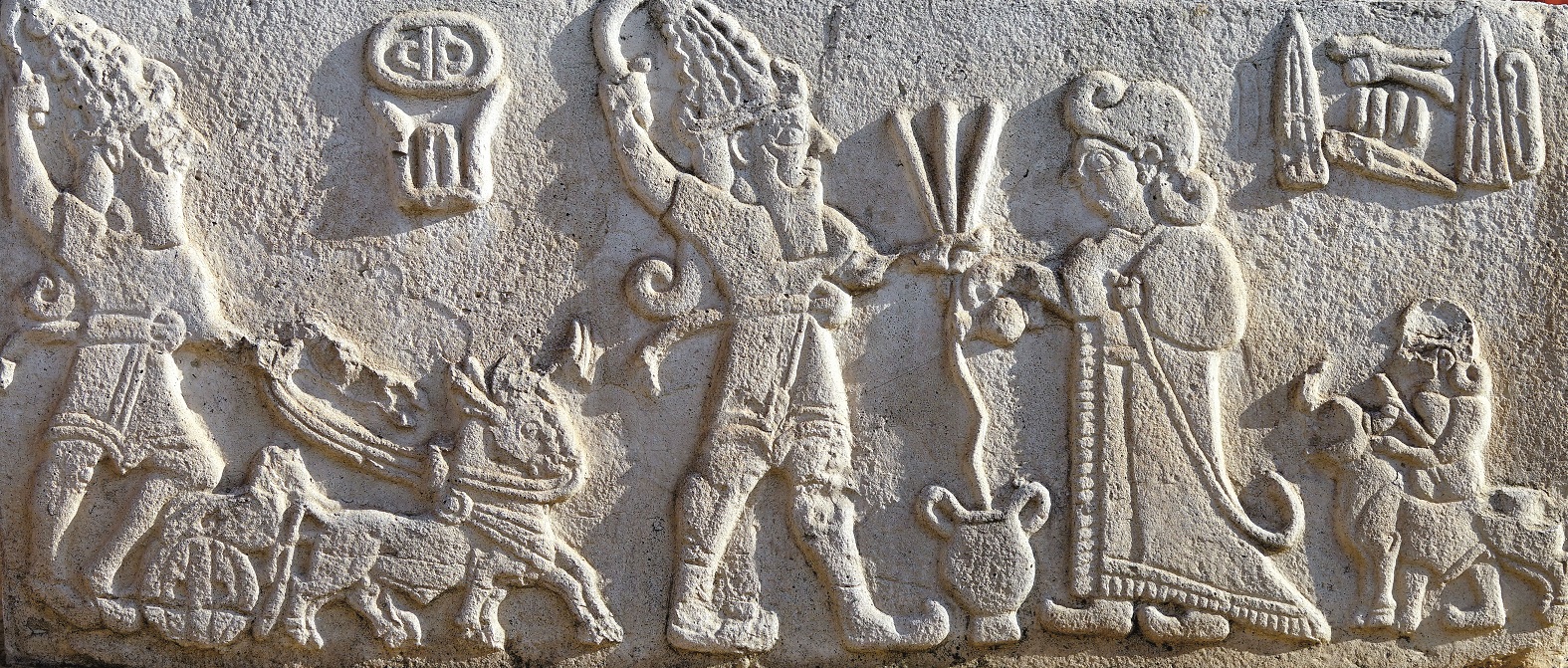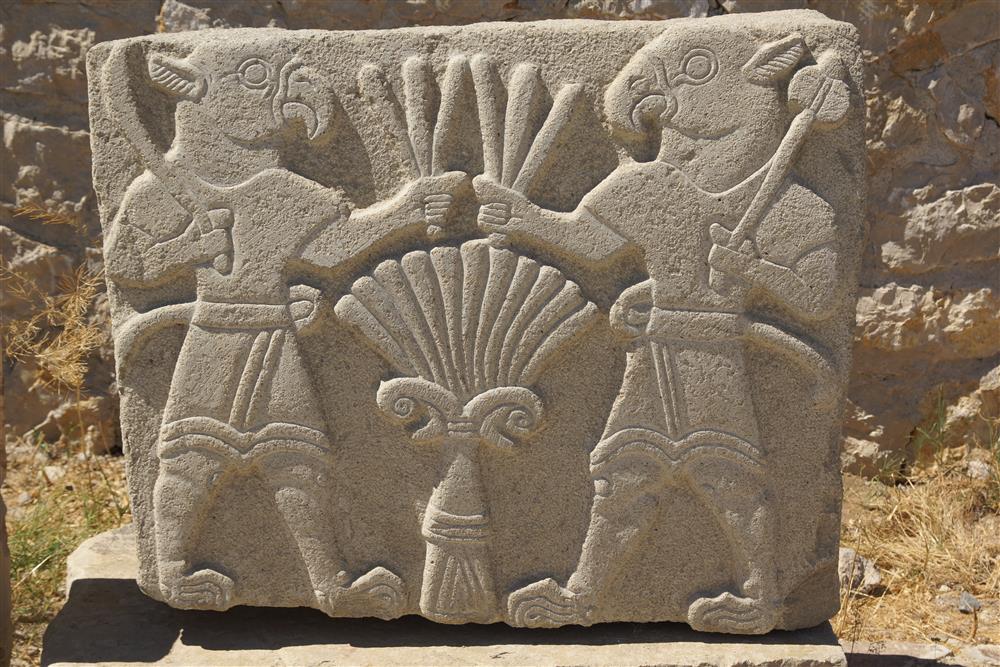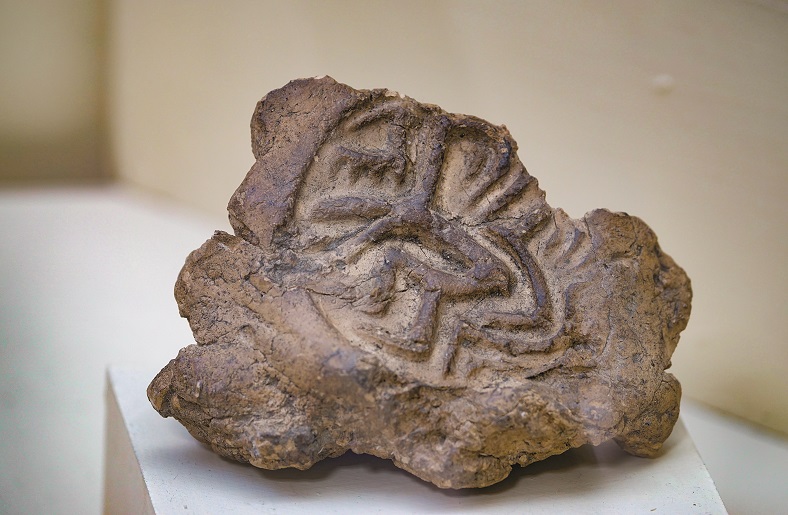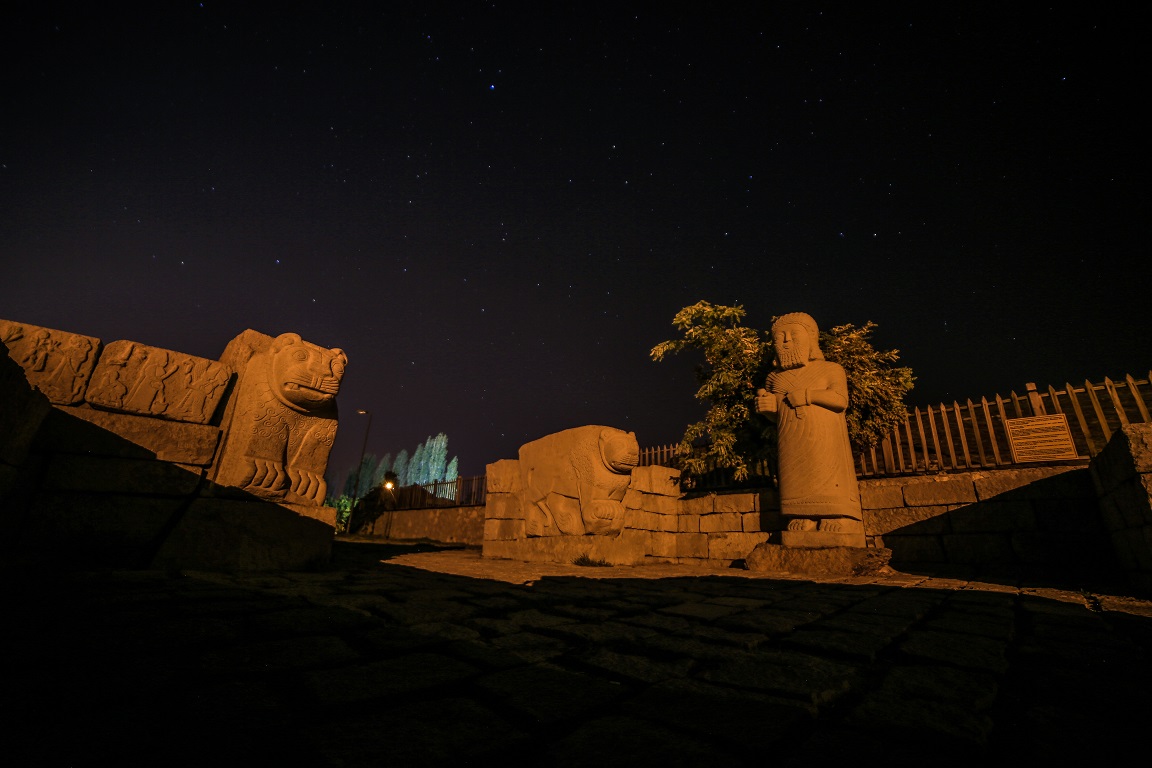Arslantepe Mound, one of the largest mounds in Turkiye, is a multi-layered site located east of Malatya near the Euphrates River, rising to a height of about 30 meters. The earliest traces of settlement date back to 5000 BC, and the area was continuously inhabited from the Chalcolithic Age through the Byzantine period. Notably, during the 4th millennium BC, the mound served as a center of advanced administrative and social organization. The mudbrick palace complex from this era contains evidence of one of the world’s earliest centralized governance systems.
Known as “Melid” during the Hittite Empire, Arslantepe remained a regional power center throughout the Iron Age. Monumental stone reliefs, sculptures, and fortification remnants from this period reflect the evolution of the region’s political structure. Arslantepe Mound was placed on UNESCO’s World Heritage Tentative List in 2014 and was added to the permanent list in 2021, thereby recognized as an important part of the world’s cultural heritage. Today, it is preserved as an open-air museum, and excavations and archaeological research continue through international collaboration.

Arslantepe Mound (Photo: T.C. Malatya Governorship)
Historical Background
The first traces of settlement on the mound date back to 5000 BC, and it remained continuously inhabited from this period through the Byzantine era. In particular, the mudbrick palace complex built during the Late Chalcolithic Period (3300–3000 BC) indicates that Arslantepe had a strong central structure. Seal impressions and remains of an administrative system uncovered from this period reveal that the site hosted a robust bureaucratic apparatus.
During the 4th millennium BC, in the Uruk Period, a mudbrick palace was constructed, which holds great significance for understanding the social and political structures of the time. The palace walls, adorned with reliefs and paintings, point to its ceremonial and administrative functions. Additionally, the arsenic copper alloy weapons found at Arslantepe demonstrate that it was also a significant military power.
In the Early Bronze Age, the area became a regional center with a developing administrative mechanism. Its position on trade routes fortified its economic structure. In the 2nd millennium BC, with the Hittite expansion into the region, Arslantepe was governed by the Hittites under the name “Melid,” during which powerful fortifications were built. Findings from excavations at the mound reflect the characteristic features of Hittite architecture.
Following the collapse of the Hittite Empire, Arslantepe continued as an independent Late Hittite kingdom. During this period, stone statues, reliefs, and large fortifications were constructed. The city’s political power was reinforced by these monumental structures, and the works produced bolstered the military and religious authority of its rulers.
In 712 BC, with the Assyrian invasion, the site experienced widespread destruction and fell under Assyrian rule. The administrative structure changed during this period, leading to a decline in the city’s importance. In the subsequent centuries, the region underwent transformations under various cultural influences.


Stone reliefs (Photo: T.C. Malatya Governorship)
In the Hellenistic Period, Arslantepe largely lost its prominence and evolved into a small settlement. During the Roman Period, the area functioned as a village, and in the Byzantine era, it was turned into a necropolis. The tomb structures built in this period illustrate a new function for the region. Included on the UNESCO Tentative World Heritage List in 2014, Arslantepe was inscribed on the permanent list in 2021. Today, the mound and its surroundings are under the auspices of the Ministry of Culture and Tourism and are managed by the Malatya Archaeological Museum.
The protection and management of the site are undertaken jointly by local municipalities, archaeological research teams, and relevant cultural heritage institutions. National and international conferences are organized to promote the site, educational programs are offered for students, and documentaries are produced to reach broader audiences.
Excavation Area and Findings
Excavations initiated in the 1930s by the French archaeologist Louis Delaporte were made systematic by Rome’s La Sapienza University starting in 1961. Due to its multiple cultural layers, the mound is regarded as one of the most important archaeological sites in Anatolia. The excavations have revealed a multi-layered settlement history spanning from the Chalcolithic Age to the Byzantine period. Monumental structures, seal impressions, stone reliefs, weapons, and tombs uncovered in the different layers of the mound underscore Arslantepe’s importance as a central hub throughout history.
One of the most significant discoveries at Arslantepe is the mudbrick palace dating to 3300–3000 BC. This structure features a multi-room complex, storage areas, and a large courtyard. Its walls are adorned with reliefs and painted decorations. Wall paintings containing geometric motifs and figurative scenes indicate an advanced artistic understanding during that era.
The palace’s structural characteristics suggest an administrative role and the functioning of a complex bureaucratic system. Excavations have yielded more than 2,000 seal impressions, most of which have been identified as linked to storage and administrative tasks. These seals show that a central authority oversaw the distribution of goods and products, and that a sophisticated administrative framework existed around the palace.

One of the seals found during the excavations (Photo: T.C. Malatya Governorship)
Stone reliefs and statues unearthed during the excavations also demonstrate that Arslantepe continued as a political and religious center during the Late Hittite period. A statue believed to belong to Hittite King Tarhunza was uncovered, embellished with reliefs symbolizing the ruler’s authority. The large stone lion statues and reliefs at the entrance of the mound are recognized as refined examples of Hittite art. Depicting royal figures and religious rituals, these reliefs indicate that Arslantepe served not only as an administrative center but also as a strong religious and cultural hub.
During the early years of excavations, key artifacts such as the King Tarhunza statue, the entrance reliefs, and the large lion statues were transferred to Ankara due to the absence of a suitable museum in Malatya. In 2011, exact replicas of some items housed at the Museum of Anatolian Civilizations were placed at the entrance to the Arslantepe Mound archaeological site. Today, certain artifacts from Arslantepe are exhibited at the Malatya Archaeological Museum, while other notable pieces are displayed at the Museum of Anatolian Civilizations in Ankara.【1】

The Hittite lion and the King Tarhunza statue at the entrance (Photo: T.C. Malatya Governorship)
Weapons found during archaeological work further highlight the mound’s military significance. The swords and daggers fashioned from arsenic copper alloys discovered at the site are considered among the oldest metal weapons in the world. These findings confirm that the ruling class in the region possessed military power and had developed warfare strategies.

Weapons (Photo: T.C. Malatya Governorship)
Another major discovery made during the excavations is a tomb dating to about 2900 BC. Alongside the skeleton, believed to belong to an important individual, valuable grave goods were discovered. On the stone lid of the tomb, the remains of four sacrificed young individuals were found, providing critical insight into the rituals and religious beliefs of the time. Royal tombs and evidence of sacrificial practices point to the existence of a powerful aristocracy at Arslantepe.


